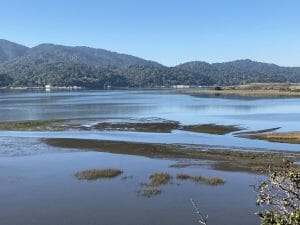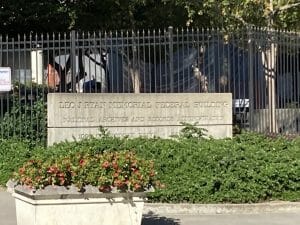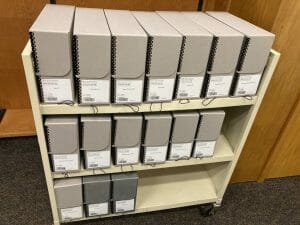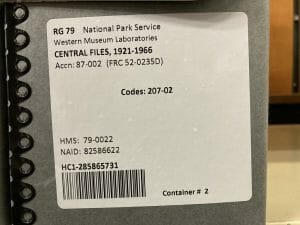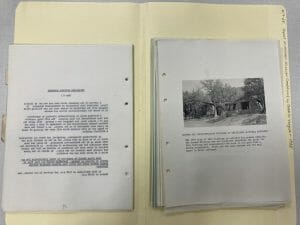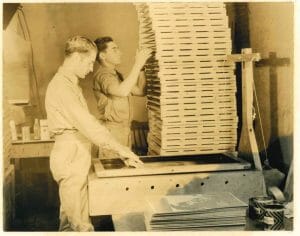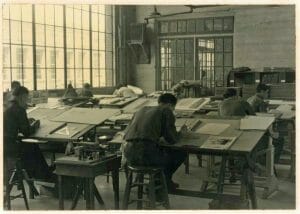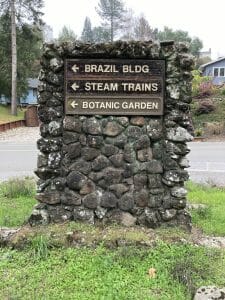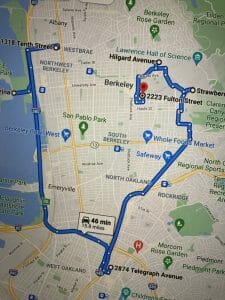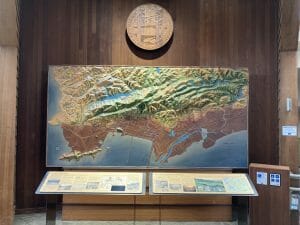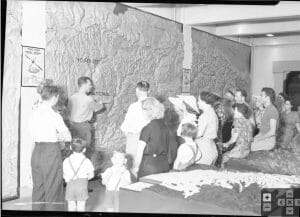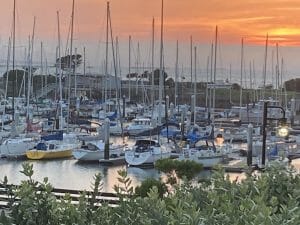In this building–an old Federal Land Bank building–between the years of 1938 and 1941, WPA artists made a set of posters for the National Park Service. Fourteen parks had prints made by the silk-screen process before WWII terminated everything. I’m writing a book on this subject and found another federal archive–in San Bruno–that had a complete copy of records and photos of this program. It’s time to do another road trip.
This poster project was housed first in this building–yes, this is what modern architects did to the building above. This was so ugly, they they tore it down instead of restoring it. Today it looks like this:
Not sure which is uglier–the building above or this parking lot. This is the back of Edwards Stadium on the UC Berkeley Campus–note in the first photograph behind the Land Bank building you can see this edifice.
OK–first stop is Thanksgiving dinner in Hood River with old friends last mentioned in the post from Leysin Switzerland. Magnificent dinner John & Adele–thank you!. They encouraged me to visit the Western Antique Aeroplane and Automobile Museum in Hood River–which I did: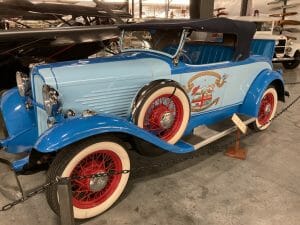
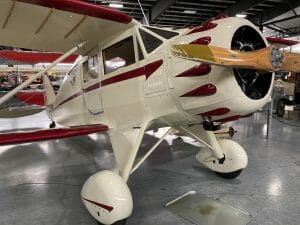
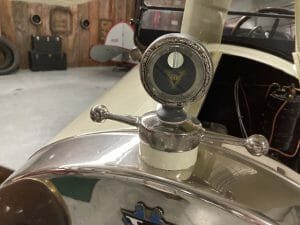
I’m a sucker for these old antiques. When I was a kid of about 16 years old, I found and old car rusting away in the woods–just like the one on the right here–a 1922 Velie (this is actually a 1921) and hauled it up a cliff nut & bolt at a time. What a futile project it turned out to be. Futile except I found an old 1922 wallet buried under the rust with $23 in it–a fortune for a 16 year old–the rest is history. With this money I bought my first pair of climbing boots from REI–for $23. I got shipped off to Vietnam a year later and all I have today is a hubcap and this motometer you see here. When the radiator overheated, the thermometer turned red in the little sight-hole. You had to slow down.
I didn’t take the easy drive south–but proceeded to Weed for the night driving down central Oregon through Bend–nice country. From Weed I drove south to Redding then made a bee-line to the coast–except it was anything like a bee-line. It was 250 miles of perhaps 15mph on the windiest road–and I didn’t follow this blue line–I followed the faint white line below through Igo, Platina, Wildwood, Ruth, Zenia and Alderpoint:
Here I am nearing Zenia. These were all dirt rooads excpet for a stretch near Wildwood:
I met and asked directions twice–and both hardly spoke English–they were Basque! Shepherds. Absolutely beautiful country except it is now populating with huge greenhouses–the town of Weed California is taking on a different meaning now. Notice the ecological roadway here.
This is the closest thing that I’ve seen to Swtizerland. Truly beautiful country. Once I hit 101 at Garberville, I turn south and make a brief stop at Richardson’s Grove.
This is another CCC project but it’s a little vague as to actually what the CCC built, expanded or improved. Here is the Living New Deal’s website information. This is a great group of people at the LND and I encourage people to get involved in preserving this unique history.
My hero–FDR. The Visitors Center interior.
About 150 miles south of Garberville, I approach Bodega Bay and Point Reyes National Seashore. I’ll stay with friends for a night then drive down to San Bruno in the morning.
Here is the Leo J. Ryan Memorial Federal Building also known as the San Bruno National Archives and Records Administration or NARA. There are over 80,000 boxes of history here and I need to look at about 16 of them. They issue a “finders” index and you apply for a table. It took me about one year to gain access. Leo J. Ryan was assassinated in 1978 at the Jonestown Massacre in Guyana.
My trolly is waiting for me at 9am. The staff here were superb an even did some research for me prior to my ferry & drive down from Alaska–just to make sure I wasn’t barking up the wrong tree. The rules here are very strict but necessary. No pens, loose baggy clothing. Scanners and gadgets had to be opened before entering. Each box had to be placed with alignment not to block cameras–there were many. i purchased an Epson V-39 scanner which was under $100, weighed 2 lbs., was the size of my laptop and was perfect.
It took me 3 days to scan about 1000 documents and photographs. Each file had to be handled one page at a time, without gloves (they cause more tearing because of loss of tactile sense–believe me, as a dentist, I know that). Staples could be removed, but not replaced. The NPS Archives in Harpers Ferry WV have only about 20% of these records. Six copies of these monthly and annual reports were made at the Western Museum Laboratories and NARA San Bruno got one. There were lots and lots of photos–here is a peek of the Jenny Lake (Grand Teton) WPA poster being printed:
On the left, the Jenny Lake poster being screen printed–two colors down, two to go. On the right, is the flatroom where they were designed. On average, there were about 200 WPA-CCC employees at any one time. The CCC boys on the left made $1/day and could only keep $5/month. They were housed in Army barracks. The WPA artists on the right were paid about $0.70/hour but they were forced to take a leave of absence after 18 months. It’ll all be in my book–and more!
Then I visited Berkeley; especially where the Wildcat Canyon CCC camp was established in Tilden Park. The old Land Bank building was at 2223 Fulton Street and at the bottom of the map was the Emeryville Labs.
Here’s an example of a relief map built by the CCC–Tilden Park is in the horizontal cleft of the valley here–Berkeley at the bottom. They made relief maps for many State and National Parks–very few have survived today. I’ve currently located the largest relief map made–a full 40′ long of the entire Sierra Front.
It is stored in an unheated shed languishing away in many sections. As I dig this out, I’ll cover it’s restoration, if I can make it happen. I envision this put back in front of the public perhaps funded by the outdoor industry and displayed in Berkeley where it was made. These WPA-CCC projects are, in my every-so-humble opinion–nearly priceless and deserve to be rediscovered and restored. Many of these are stored away in national park warehouses or on the way to the dump; like the Jenny Lake poster 50 years ago. The NPS simply doesn’t have the money–they hardly can fix their roads. The poster art is only one small fraction of the exhibits made for our National Parks. I urge everyone to investigate the Living New Deal and also visit the website New Deal Legacy dot org (link currently down) which is cataloging everything created by the WPA-CCC.
It’s been a long week! My evening off in the Berkeley Doubletree–Gin & Tonic at 5pm!! My guests are the Berkeley New Deal group! Stay tuned!

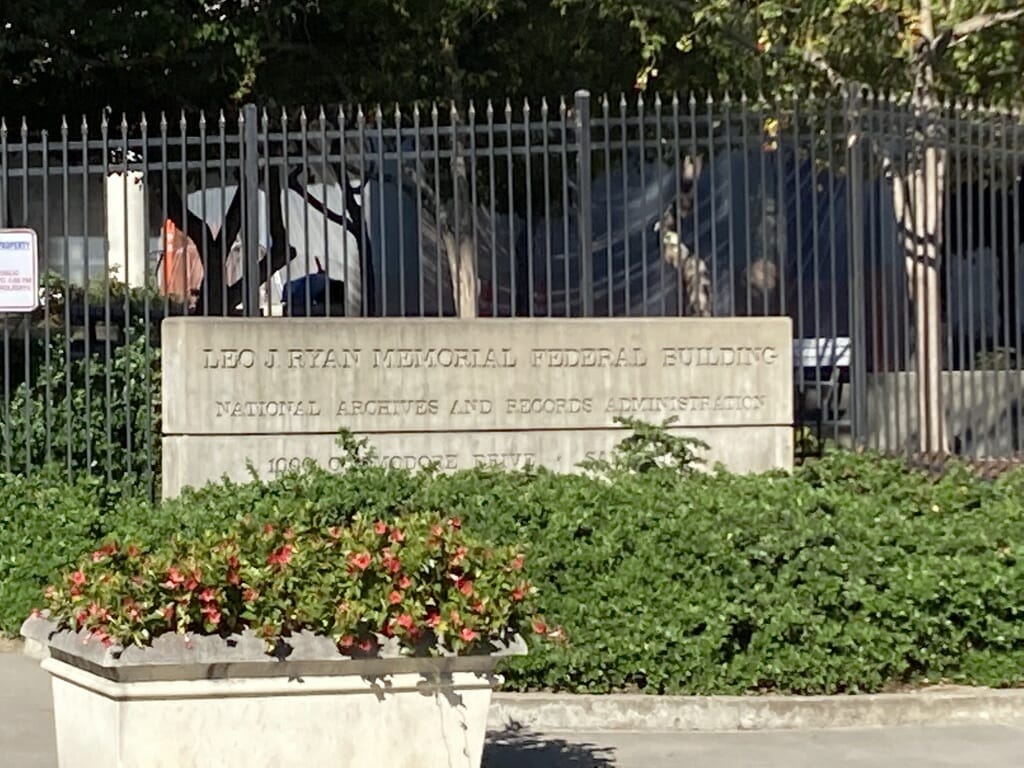
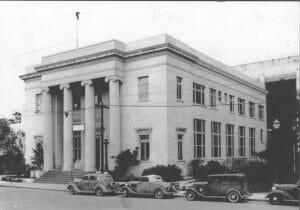
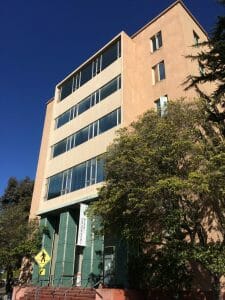
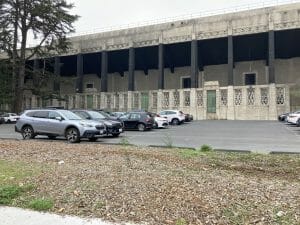
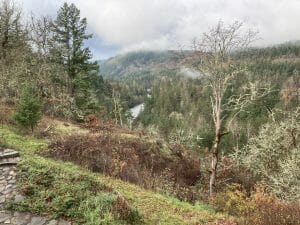
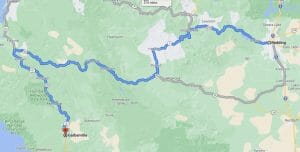
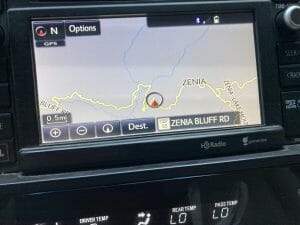
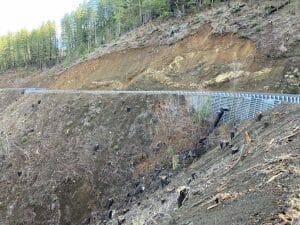
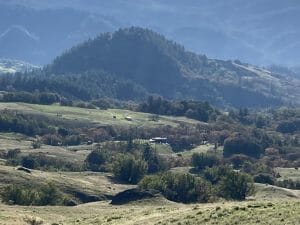
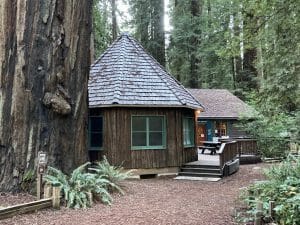
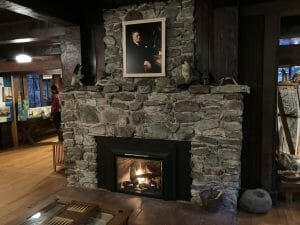 \
\